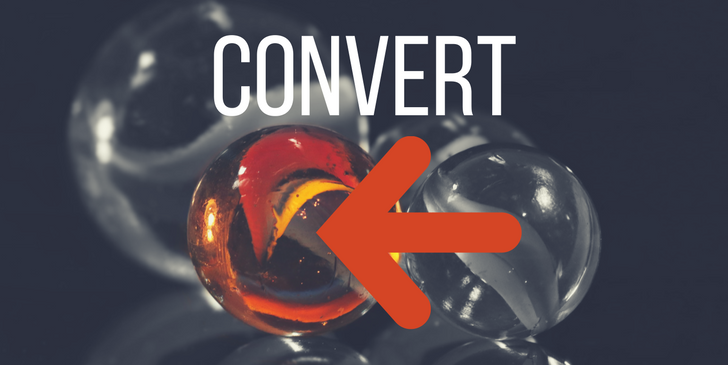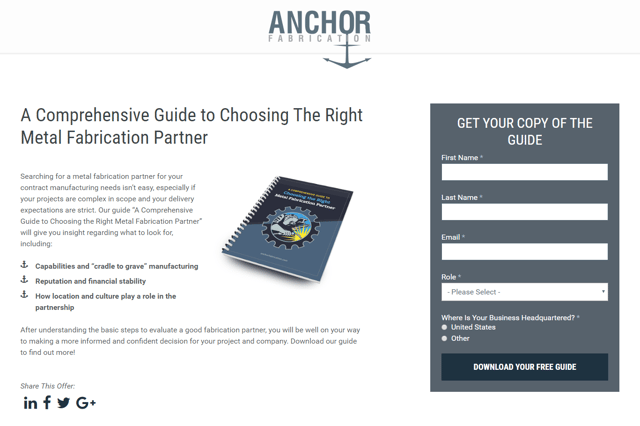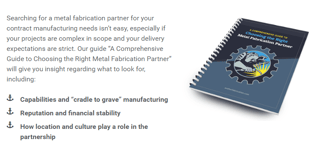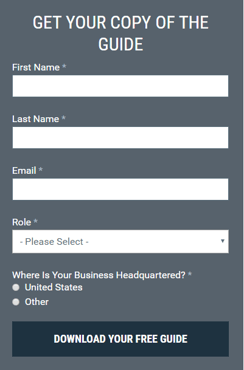Inbound Marketing Blog
for Manufacturers and Healthcare Companies
How to Create a Landing Page
 You have a high-quality visitor on your site and a call-to-action that draws his or her attention. What you need now is a landing page.
You have a high-quality visitor on your site and a call-to-action that draws his or her attention. What you need now is a landing page.
So, what is a landing page?
A landing page is a web page designed to convert visitors into leads. Ultimately, it lets your visitor know exactly what to do next after landing on your site.
With the help of a landing page, you can gather information about your website visitors, then use that information to build and grow relationships with your leads.
A landing page is a fundamental part of a successful inbound marketing strategy. So, how do you create a landing page? Let’s take a look.
How to create a landing page
Write a headline
But, just don’t write any headline. It needs to be attention-grabbing and clearly explain what your offer is. Your visitor needs to know what your offer is just by reading your headline.
Write an offer description that clearly tells your visitors its value
Explain what your offer is. Then, let your visitors know how they can benefit from it.
Make it brief so your visitor doesn’t have to scroll down the page. Visitors typically know if they want an offer in a few seconds. Numbering, bolding and bullets make pages easier to read.
Include at least one supporting image
A visual helps your visitors understand your offer more quickly than text. In fact, 40% of people respond better to visual information.
Create a form
Having a form on your landing page is an opportunity to have a visitor convert into a lead. Your call-to-action brought them to your landing page. Now, it’s time to collect their information.
Make sure to only ask for the information that you need. Asking for too much information or the wrong information can result in a visitor leaving your page and a missed conversion for you.
Remove your website’s navigation menu and links
The primary goal of your landing page is to generate leads, so get rid of the distractions. Warren Buffett’s “2 List” Strategy can help you figure out your priorities.
And add social sharing buttons so your offer is shared.
Landing page example you'll want to copy
Now that you know how to create a landing page, let’s take a look at an example:

Anchor Fabrication brings you to this landing page after clicking on a call-to-action in their blog. This is a great landing page.

- Descriptive headline. Their headline, “A Comprehensive Guide to Choosing the Right Metal Fabrication Partner” is clear, concise, and tells you exactly what the offer is.

- Overview of benefits. The offer is clearly highlighted in their description. Bullets and bolding are used to make the text easier to read.

- Short form. Little information is asked in their form. Anchor Fabrication is only asking for specifically what they need.

- Tight focus. Finally, Anchor Fabrication deleted all the distractions from the landing page. The main nav is gone (but you can still “escape” by clicking on the logo). The only possible distractions are the social sharing buttons in the bottom left.
Now that your landing page has created a newly converted lead, it’s time to increase engagement and entice them further through the funnel:
- Use a thank you page to offer more information.
- Make sure automated lead nurturing emails are ready to go
- Use social buttons to encourage following and sharing
Related article: From a Landing Page to a Thank You Page
Our Blogs, Direct to Your Inbox!
How to Audit your Online Marketing
If you are executing digital marketing, congratulations! You are most likely already one step ahead of your competition, and making strides to meaningfully connect with prospects online. But, how do you know if you’re seeing continual success year over year, and improving your metrics?
Without the tools in place to analyze and benchmark your efforts, it is impossible to scale your online marketing and ensure continuous success.




